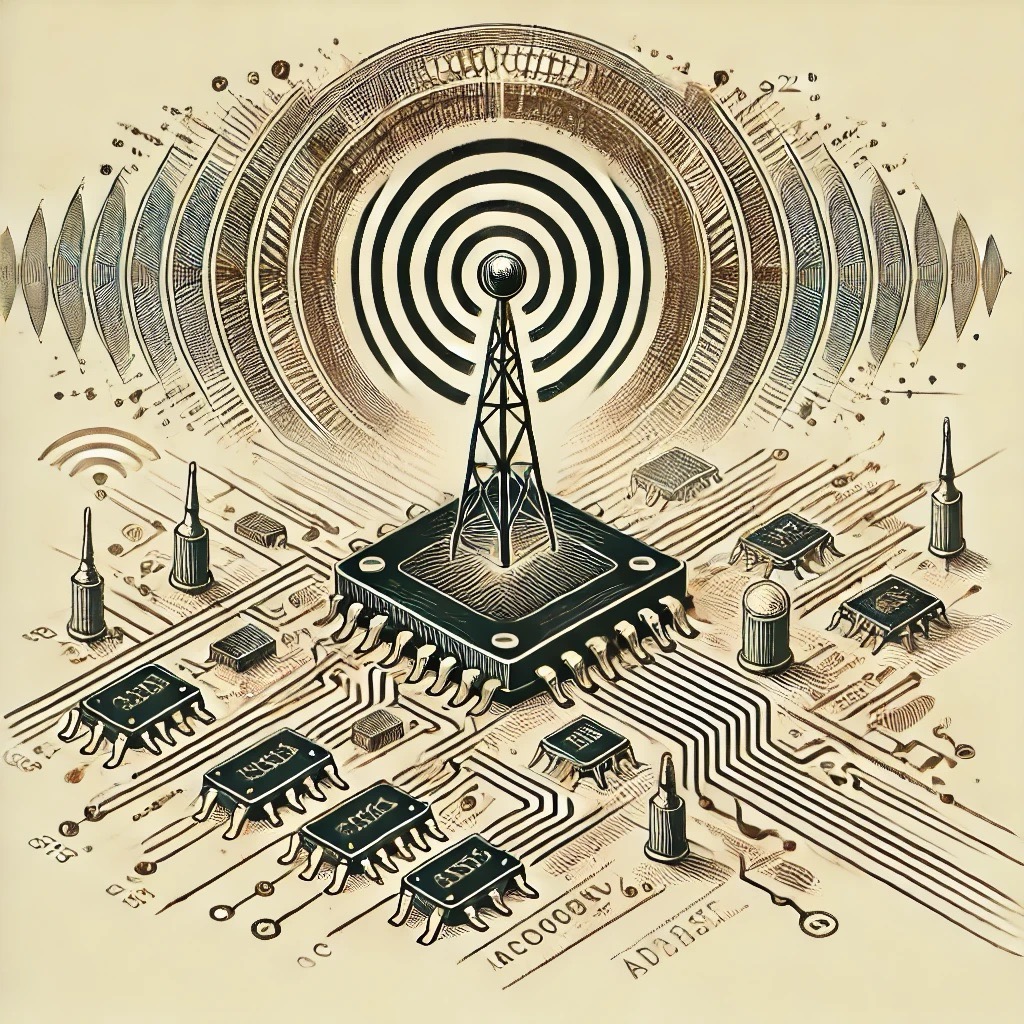Introduction to Wireless Communication Modules
Wireless communication modules allow electronic systems to communicate without physical connections, making them ideal for applications like remote sensing, IoT, and wireless data transmission. This page will cover popular wireless modules, their features, and examples to help you start using them in your projects.
Common Types of Wireless Communication Modules
1. WiFi Modules
WiFi modules enable devices to connect to the internet or local networks. The popular ESP8266 and ESP32 modules offer reliable and affordable options for IoT and smart home projects.
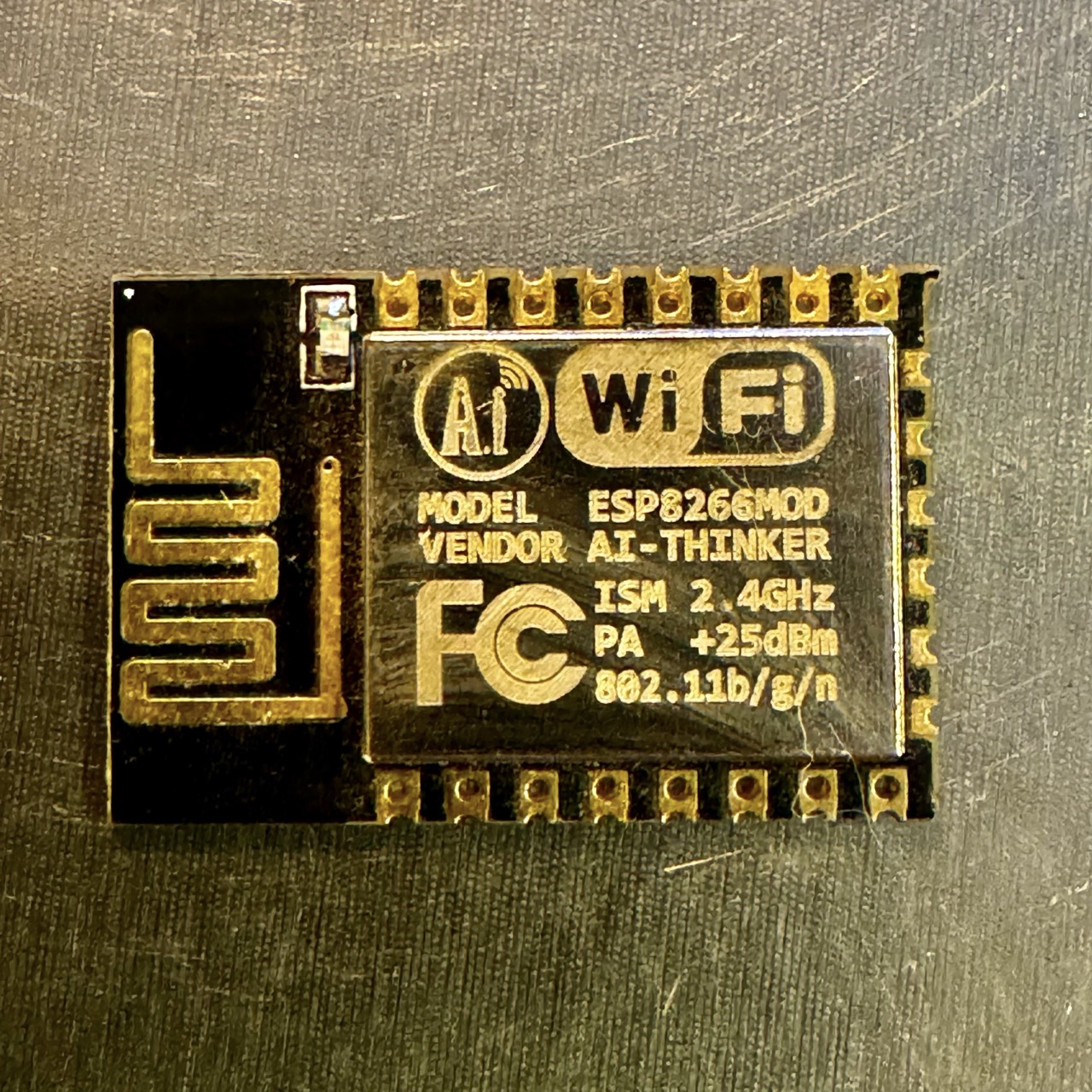
ESP8266 WiFi Module: This module is widely used for its low cost and ability to connect directly to WiFi networks. It supports basic web servers and HTTP requests, making it versatile for IoT applications.
2. Bluetooth Modules
Bluetooth modules enable short-range wireless communication, making them ideal for connecting peripherals and creating mesh networks. Popular modules include HC-05, HC-06, and BLE (Bluetooth Low Energy) modules.
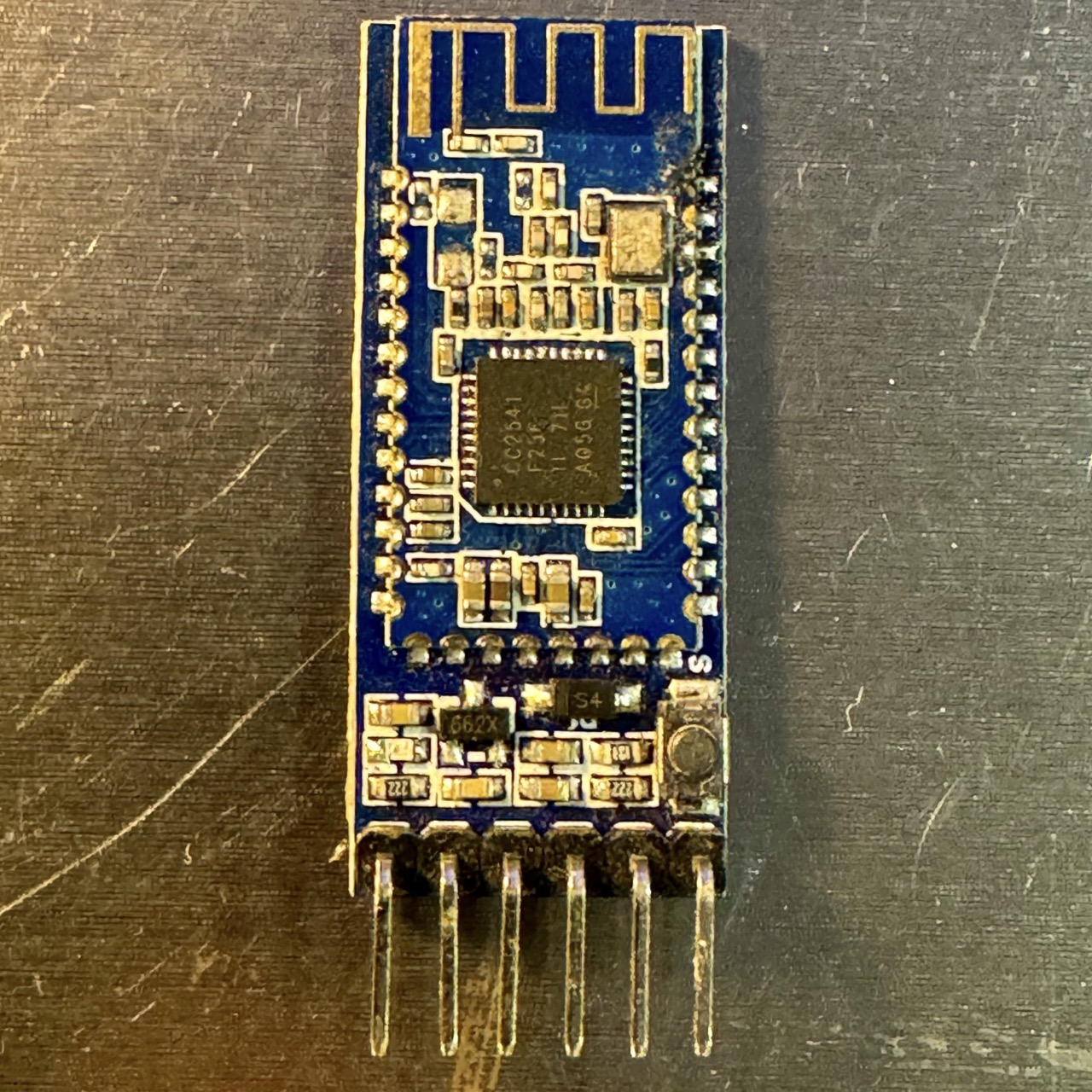
- HM-10 Bluetooth Module: A low-energy (BLE) Bluetooth module that supports BLE 4.0, allowing it to connect with modern smartphones and other BLE-enabled devices while consuming minimal power.
- HC-05 Bluetooth Module: This classic Bluetooth module supports both master and slave modes, enabling it to connect to multiple devices or act as a standalone Bluetooth interface for serial communication.
- HC-06 Bluetooth Module: A simple and cost-effective Bluetooth module designed exclusively for slave mode, making it ideal for establishing wireless serial communication with a master device like a smartphone or PC.
- JDY-08 Bluetooth Module: A compact BLE module designed for low-power applications, featuring simple AT command support for easy integration into IoT and wearable projects.
3. NRF24L01 Modules
The NRF24L01 module is a widely-used wireless transceiver for low-power communication, ideal for short-to-medium-range IoT projects such as home automation and sensor networks.
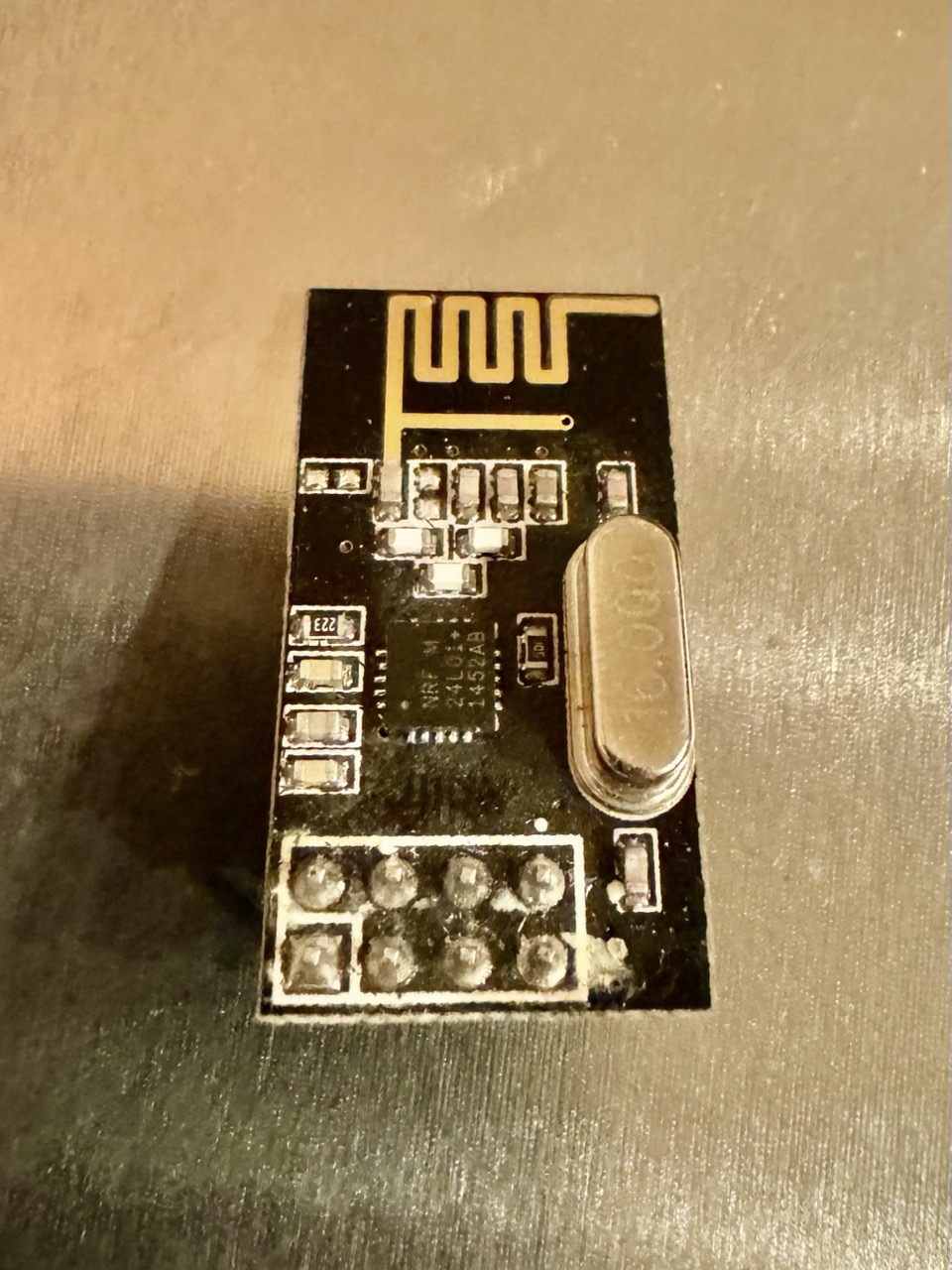
NRF24L01: The NRF24L01 can communicate over distances up to 100 meters (outdoors, line-of-sight) and supports low-power data transfer. It operates in the 2.4 GHz ISM band and is often used for point-to-point or multi-node networks.
4. Zigbee Modules
Zigbee modules, such as XBee, are used for creating low-power mesh networks, making them ideal for home automation and industrial applications.

XBee Series 2: XBee modules support mesh networking and can communicate over distances of up to 100 meters indoors. They are commonly used in wireless sensor networks.
5. GSM Modules
GSM modules, such as the SIM800L, allow devices to connect to cellular networks, enabling SMS, voice calls, and internet access over mobile networks.

SIM800L GSM Module: This module allows an Arduino to connect to cellular networks, making it ideal for remote monitoring, SMS alerts, and mobile IoT applications.
6. Infrared (IR) Modules
IR modules use infrared light to enable wireless communication between devices. They are commonly used in remote controls, proximity sensors, and data transmission systems.
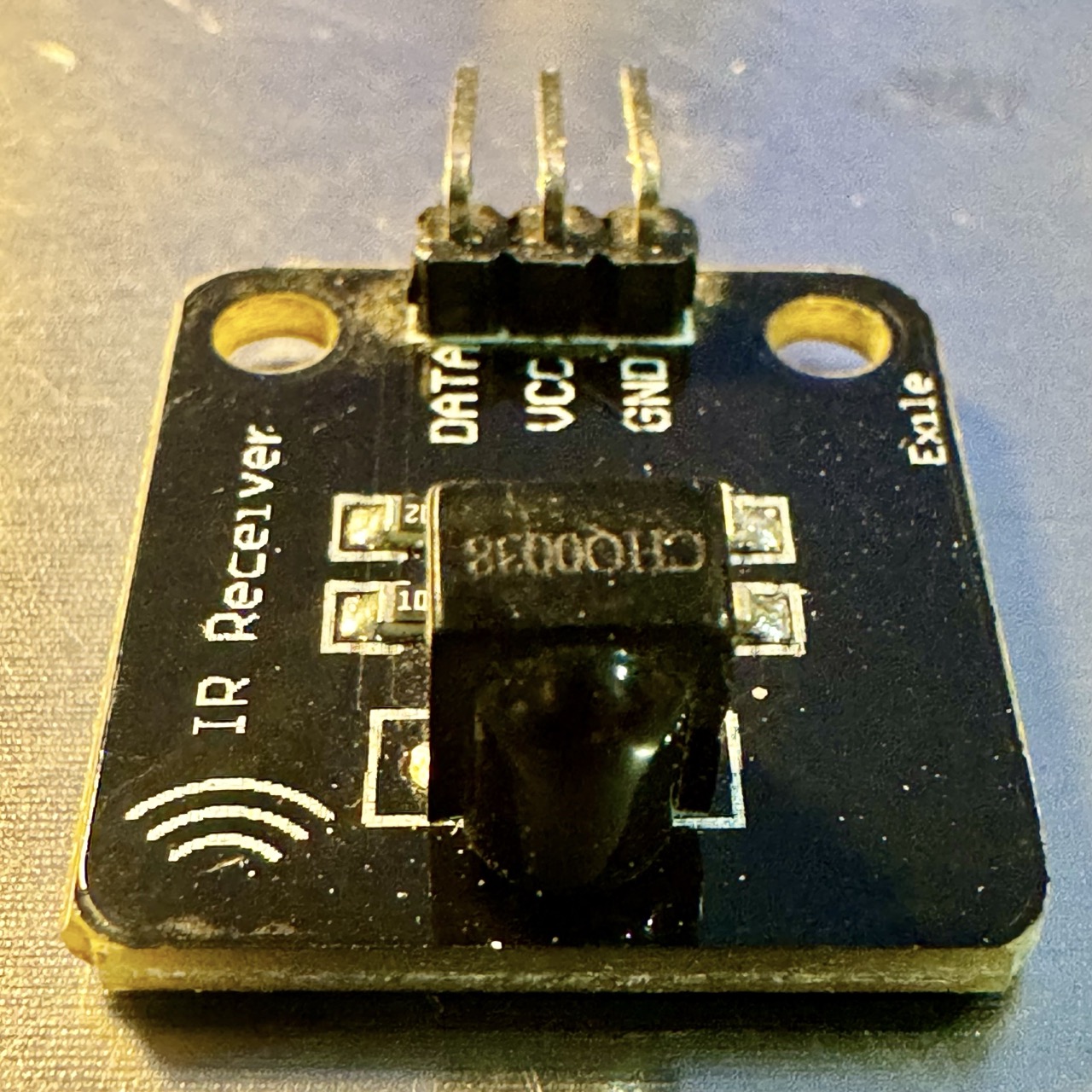
IR Transceiver Module: IR transceivers can send and receive signals for applications like remote control systems. Popular modules include the KY-022 receiver and the KY-005 transmitter.
7. 433MHz RF Modules
433MHz RF modules are widely used for simple, low-power, long-range communication in projects like wireless alarms, weather stations, and remote switches.
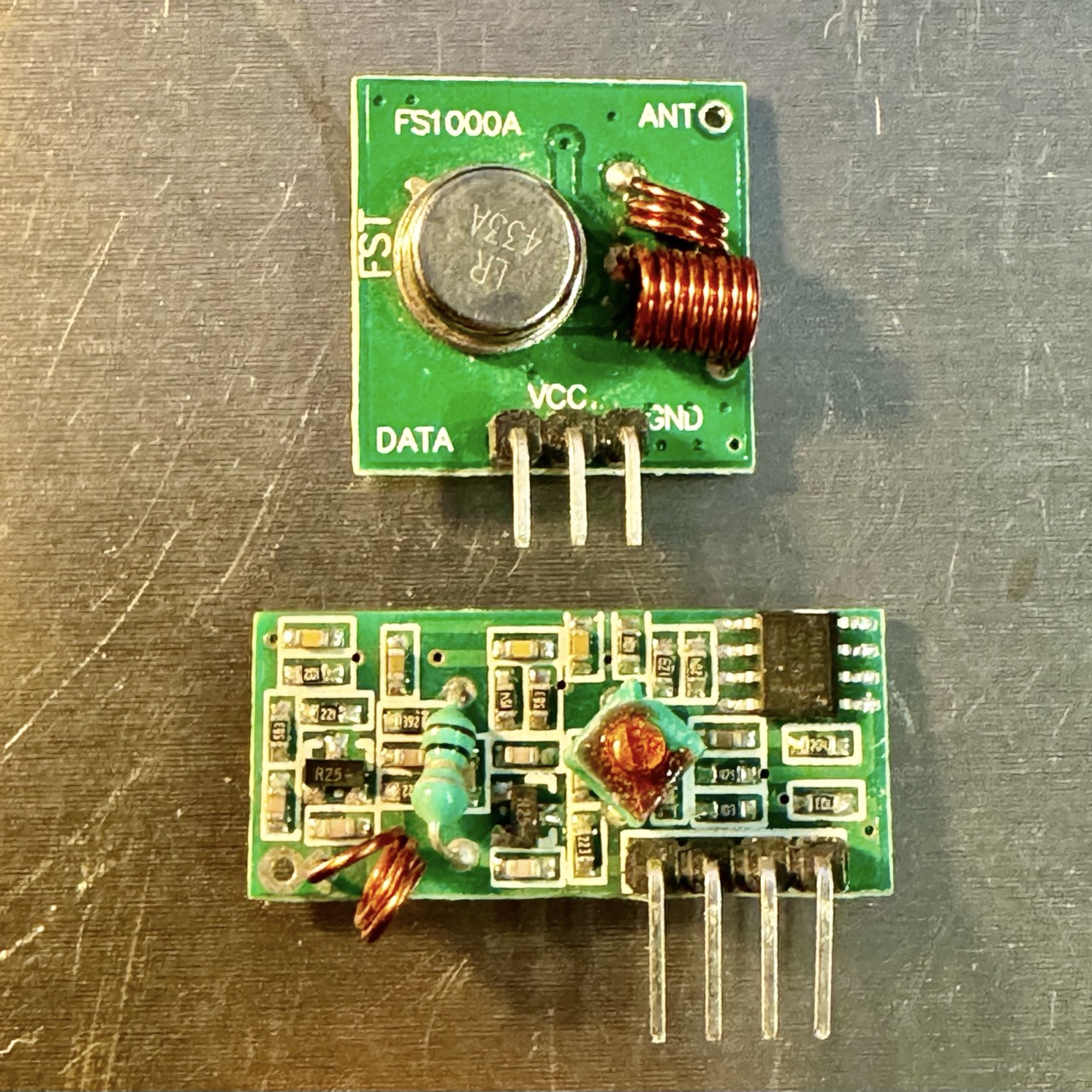
433MHz RF Transceiver: These modules consist of a transmitter and a receiver that communicate over the 433MHz frequency band. They are lightweight, cost-effective, and suitable for short-range applications.
8. LoRa Modules
LoRa (Long Range) modules are ideal for long-distance, low-power communication. They are often used in IoT projects for environmental monitoring and smart agriculture.

LoRa SX1278 Module: This module supports long-range communication (up to 10km in ideal conditions) and operates in the sub-GHz ISM band.
9. GPS Modules
GPS modules provide location and time data by receiving signals from GPS satellites, making them essential for navigation and tracking applications.
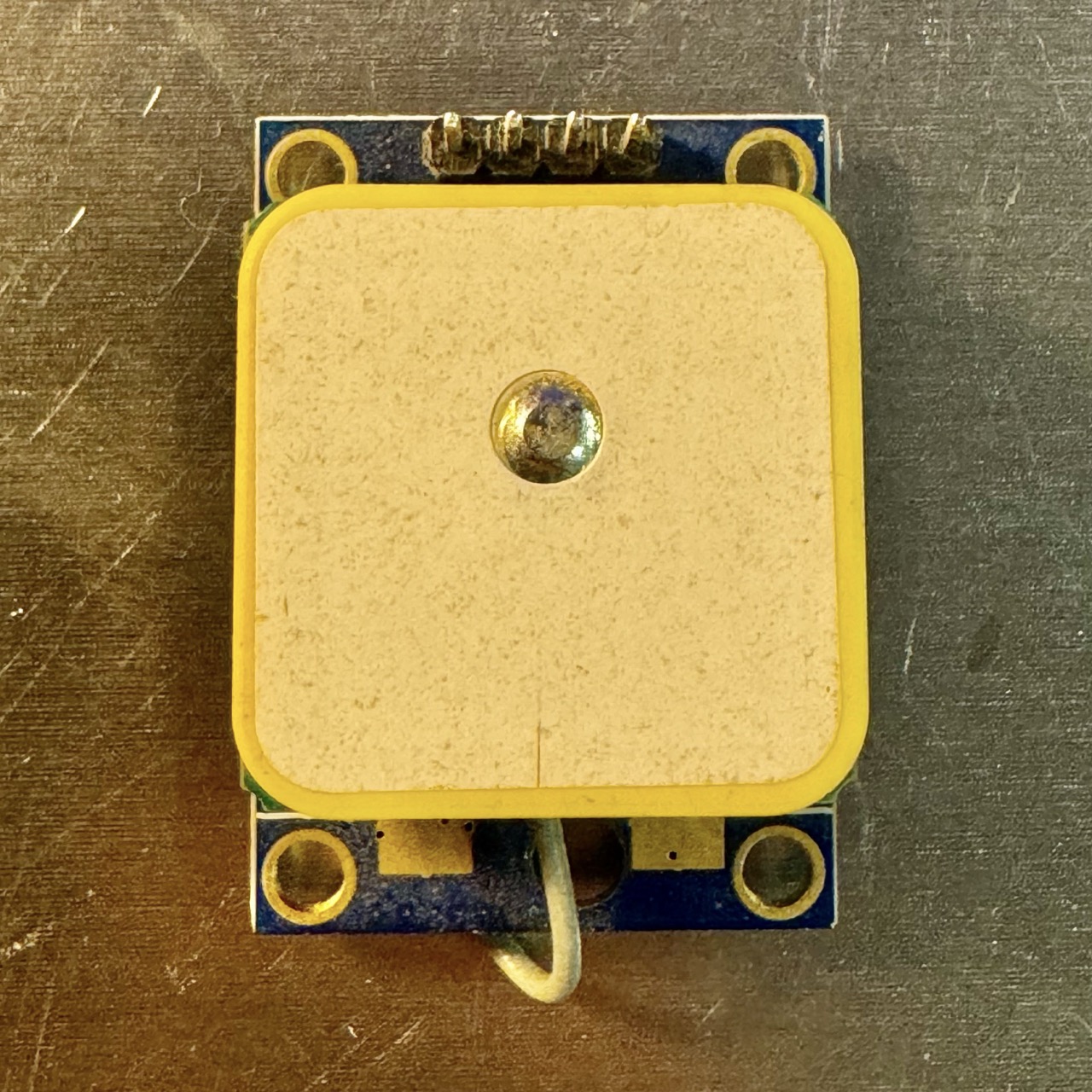
Neo-6M GPS Module: This popular GPS module is known for its accuracy and ease of use. It’s widely used in drones, vehicles, and location-based IoT applications.
10. NFC Modules
NFC (Near Field Communication) modules enable short-range communication between devices, making them ideal for payment systems, secure access, and data transfer.

PN532 NFC Module: A popular module for reading and writing NFC tags and cards. It’s often used in access control systems and contactless payment solutions.
11. Z-Wave Modules
Z-Wave modules are designed for home automation systems, enabling devices like smart lights, thermostats, and sensors to communicate in a low-power wireless mesh network.

Z-Wave 500 Series Module: A reliable and energy-efficient module that supports long-range communication within home automation systems.
Practical Project: Weather Station with ESP8266 and BME280 Sensor
Components Needed:
- ESP8266 WiFi Module
- BME280 Temperature, Humidity, and Pressure Sensor
- Jumper Wires
Code:
#include
#include
#include
#include
const char* ssid = "Your_SSID";
const char* password = "Your_PASSWORD";
Adafruit_BME280 bme;
void setup() {
Serial.begin(115200);
WiFi.begin(ssid, password);
while (WiFi.status() != WL_CONNECTED) {
delay(1000);
Serial.println("Connecting to WiFi...");
}
Serial.println("Connected to WiFi");
if (!bme.begin(0x76)) {
Serial.println("Could not find a valid BME280 sensor!");
while (1);
}
}
void loop() {
float temperature = bme.readTemperature();
float humidity = bme.readHumidity();
float pressure = bme.readPressure() / 100.0F;
Serial.print("Temperature: ");
Serial.print(temperature);
Serial.print(" °C, Humidity: ");
Serial.print(humidity);
Serial.print(" %, Pressure: ");
Serial.print(pressure);
Serial.println(" hPa");
delay(2000);
}
Further Experiments
- Combine multiple modules, like using LoRa and a GPS module, to track locations over long distances.
- Use a GSM module to send alerts to your phone based on sensor readings, such as temperature or motion.
For more inspiration, check out our Wireless Projects page or explore the 100 IoT Experiments for hands-on learning.
Microcontrollers with Integrated Wireless Communication
Modern microcontrollers often come with built-in wireless communication capabilities, making them ideal for compact and efficient designs. These microcontrollers simplify the design process by integrating communication protocols directly into the chip.
1. ESP8266
The ESP8266 is one of the most popular WiFi-enabled microcontrollers. Its low cost, rich set of features, and ease of use make it ideal for IoT projects.
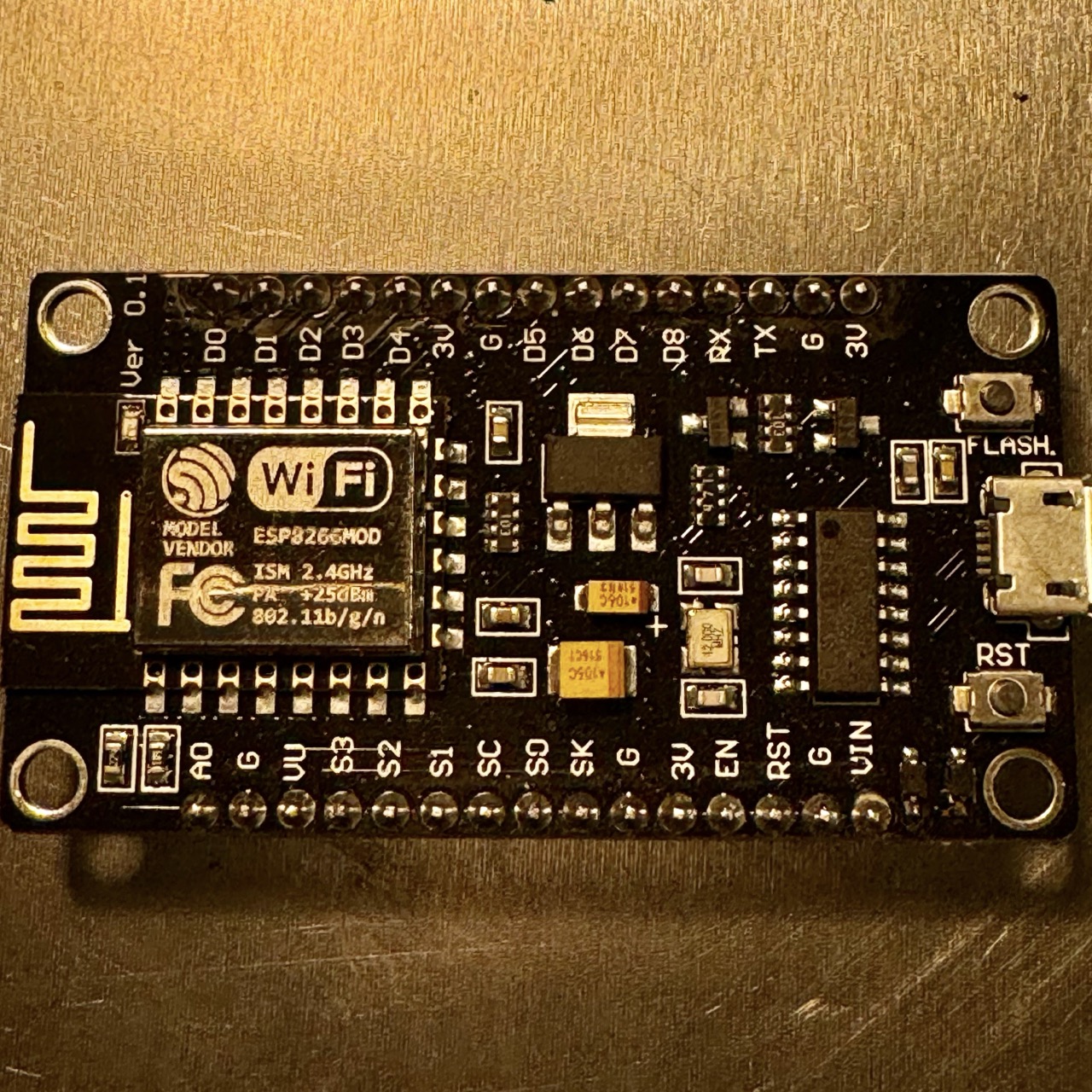
- Built-in WiFi with TCP/IP stack.
- 1 MB to 4 MB flash memory.
- GPIO pins for sensors, actuators, and peripherals.
2. ESP32
The ESP32 is an advanced microcontroller that includes both WiFi and Bluetooth capabilities, making it versatile for IoT and smart home applications.
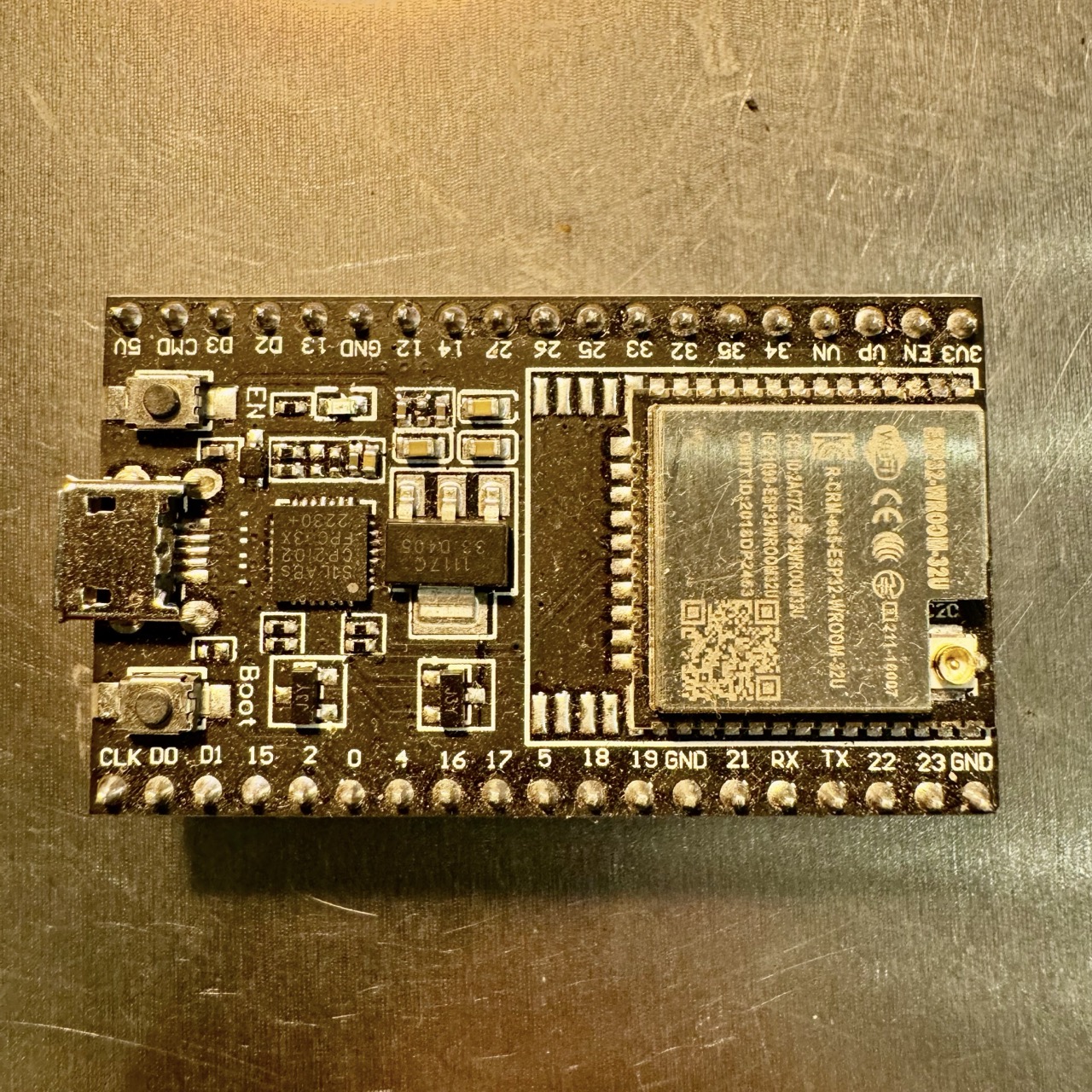
- Dual-core processor for parallel tasks.
- WiFi and Bluetooth (classic and BLE) support.
- Wide range of peripherals including ADC, DAC, I2C, and SPI.
3. Arduino R4 WiFi
The Arduino R4 WiFi combines the robust capabilities of the Renesas RA4M1 microcontroller with built-in WiFi and Bluetooth functionality, making it perfect for both beginners and experienced developers working on IoT and automation projects.

- Built-in WiFi and Bluetooth (BLE) powered by the ESP32-S3 co-processor.
- High-performance Renesas RA4M1 32-bit ARM Cortex-M4 microcontroller.
- Expanded 24 V tolerance for industrial-grade applications.
- Seamless integration with Arduino IDE and the new Arduino Lab tools.
4. Raspberry Pi Pico W
The Raspberry Pi Pico W is an enhanced version of the Pico microcontroller that includes built-in WiFi, making it suitable for lightweight IoT projects.

- Low-cost, efficient ARM Cortex-M0+ processor.
- Built-in 2.4 GHz WiFi connectivity.
- Ideal for microcontroller-based web servers.
Why Choose Integrated Microcontrollers?
- Reduced size and complexity of projects.
- Faster prototyping with fewer components to connect.
- Enhanced power efficiency compared to separate modules.
- Seamless integration with modern development tools and ecosystems.
Practical Applications
Integrated microcontrollers with wireless communication can be used for:
- Smart home devices like light controllers and thermostats.
- IoT-based monitoring systems for agriculture and industry.
- Portable fitness trackers and wearables.

If you have any questions or inquiries, feel free to reach out to us at Microautomation.no@icloud.com.
